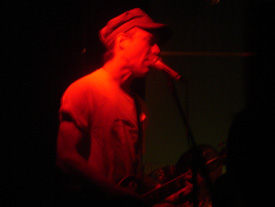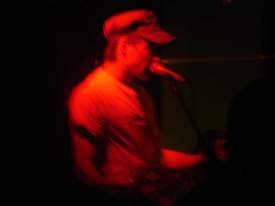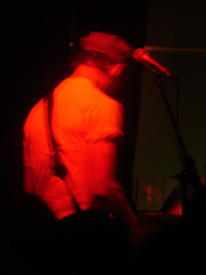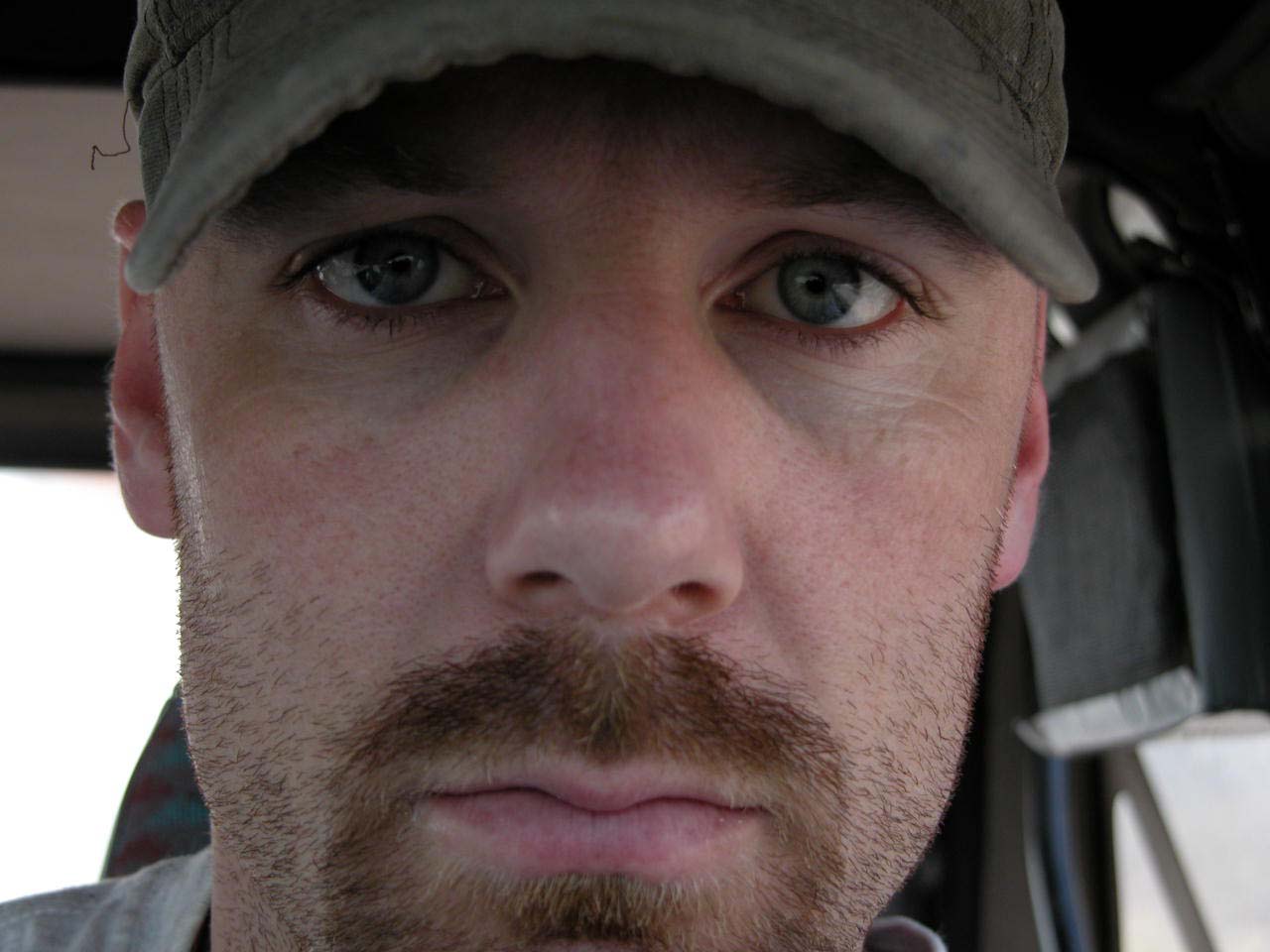Mic Trout’s Hand-Embroidered Corduroy Blazer: Homegrown
Chris Godsey went to Duluth for the annual music festival Homegrown, and wondered why he ever left.




Please, someone give me one good reason not to leave Minneapolis and move back to Duluth. I want to stay, but it’s tough to figure out why I should.
Three easy responses have to be automatically disallowed, on the basis of their utter thoughtlessness and stupidity:
1&2. “Because there’s more to do down here,” and its even more ignorant, arrogant twin,“ Because there’s nothing to do up there.”
3. “Because there’s more diversity and open-mindedness down here.”
Weak, every one of them. “More” and “nothing” can be relative concepts—volume seldom guarantees uniqueness or quality. And rules of proportion ensure that Minneapolis will always have a much higher population of white, racist, fag-hating, fundamentalist dullards than Duluth.
Also: condescend carefully, because while you’re dismissing the Duluth arts scene as cute and quaint, with only freakish spots of credibility, snobs in Chicago and New York are making the same mistake about Minneapolis.
I’ve lived down here since the end of December. The artistic—especially musical–Utopia I’d expected to find has proven illusory. Opportunity is infinite, but it’s also prohibitively expensive. Minneapolis kicks Duluth’s ass in hosting big-name national acts, although I can afford so few of those shows that I could live in Duluth, drive down here for the same number of shows, avoid daily assloads of traffic, $5 Miller High Life bottles, and legions of dour hipsters, save money, and actually gain significant quality of life.
Well, I’d miss hanging out and writing at Bev’s Wine Bar while Moose and Sadie’s is under construction, but one lovely coffee joint cannot negate an entire culture of self-congratulation.
Even local and low-cost music in Minneapolis isn’t so low-cost—8 bucks every night at the 7th Street Entry! Doesn’t it make sense to live in a place where it’s possible to afford seeing decent, interesting bands every night instead of just living vicariously through whatever Jim Walsh and Molly Prismeier write in City Pages’ “In Da Club” column?
On the first weekend of May in Duluth, during the Homegrown Music Festival, 80 local bands, solo artists and DJs played nine venues for $13. That’s 13 bucks for an entire weekend of music, in a city where the most expensive beer you can buy (at least at any of those nine places) costs four bucks (and tastes the same as it does when you pay more), where the most important venues are within a five-minute walk of each other, and where only one place was sold out (and that was only for one show).
Not every weekend in Duluth features 80 acts. But more than those 80 exist, and every Duluth weekend does include multiple opportunities to see very good local shows (not to mention frequent Minneapolis, regional, and national acts).
Homegrown started on Thursday night, with an all-local-music DJ set during the Starfire Lounge at Fitger’s Brewhouse. Four solid hours of Duluth music. Across the hall, in the brand-new Red Star Lounge, $8 martinis and a constant hip-hop bump would have made sophisticated Metro dwellers feel right at home.
Friday and Saturday are the heart of Homegrown. Multiple venues host music from 8 till 2, but the places to be this year, depending on your tastes, were Pizza Lucé, the NorShor, the Red Lion, the Brewhouse, or the Tap Room.
Jamie Ness opened Pizza Lucé on Friday. He lived in Minneapolis for a time, while leading a band called the ATF. City Pages put his 2002 record Dodging the Landlord at number 7 on its list of 10 best local releases for that year. He moved back to Duluth a while ago, and no one but him knows why he didn’t play out for a few years, but he’s back at it. If Luce weren’t so loud, more people would have heard his wise, engaging lyrics, and not just the sweet, agile acoustic guitar that perfectly complements the words.
After Ness, Alan Sparhawk and two of his Duluth buddies–bassist Matt Livingston and drummmer Eric Pollard—filled Low’s time slot. Two days before, Sparhawk had posted a message at Low’s Web site (www.chairkickers.com) that reads, in part, “Low has to cancel the shows we have booked in May and June–perhaps beyond…. I have not been very mentally stable for the last while. Due to this, touring at this time has become too much of a burden on everyone involved…. And it is too much to ask those around me to have to put up with that any more.”
Much of the audience still didn’t know about those events, and Sparhawk started the set by apologizing for Low’s absence. Over the next 45 minutes, the hastily-convened trio played a brilliant, emotional, aggressive set of covers by local folks, starting with the song “There Will Always Be a Suicide,” by early-‘90s punkers 18 Dimensions of Love, who played the Recycla-Bell on the night of Low’s first live show.
Sparhawk is a genius of conveying unspeakable emotion via guitar (anyone who witnnessed his stunning guest solo during Pedro the Lion’s version of “Revolution Blues” on Feb. 12 at First Avenue will understand). He created painful, shredded transcendence on a Telecaster during tunes by unsung talent Bill Reichelt; ‘80s heavy metal parody/tribute rockers Bone Appetit; and ambient masters if thousands.
It was a historic show—Sparhawk plays nowhere more viciously than he plays Duluth, and Pollard and Livingston complement him the same way Mitch Mitchell and Noel Redding complemented Jimi Hendrix–and ephemeral moments are cool, but it’s a crime if that trio doesn’t start regularly getting very loud and loose together.
Before their final song, an as-yet-unnamed Low tune, Sparhawk said, “This last one is by one of my favorite bands.” As soon as it was over, he packed up his gear, said some hasty hello-goodbyes, and sprinted down Superior Street to catch Crew Jones at the Tap Room.
The Joneses rock the shit out of a live hip-hop show with a funky combination of guitar, bass (Matt Livingston again—he’d bolted from Pizza Luce before Sparhawk), Rhodes electric piano, drum machine, and poetic lyrics about ice fishing, swimming in North Shore rivers, and existing as thoughtful human beings in a world that seldom makes sense.
After Crew Jones, Sparhawk’s punk-blues band the Black-eyed Snakes whipped the three or four hundred people at the Tap Room into a rhythmic dance-mosh that’s the inevitable result of the group’s Duluth shows. Minneapolis crowds are too cool to react. People in other cities just don’t know what to make of all the noise (A horrified, reverent Low fan in Amsterdam once cornered Sparhawk after a Snakes show and shouted, “You must stop doing this!”) Duluth audiences understand what the Central Hillside sound is all about, and they responded appropriately till after 2 a.m.
About 60 people showed up at noon the next day for the annual Friday Night vs. Saturday night Homegrown kickball game at Chester Bowl. Saturday night won in the usual spectacle of spastic, hung-over, drunk-again kicking and fielding. Local legend and former college football player Mark Lindquist—Duluth’s embodiment of Robert Pollard, Paul Westerberg, Bob Mould and Stephen Malkmus—is usually the game’s most ardent and competent participant.
Lindquist’s latest band, Little Black Books, played a solid 9 p.m. Saturday set at the Red Lion (where cans of Black Label are just $1.50), just after a very cool new band called Moons of Jupiter, and just before the angular, ominous ‘60s pop-rock of Boy Girl Boy Girl (consider how the Dave Clark Five would sound if they crashed into the B-52s).
Later on down the block, if thousands blew a few minds at the Red Star by adding a horn player and video spectacle (not the Laser Floyd kind) to their already spaced-out show. Across the hall at the Brewhouse, Jerree Small showed why she was asked to play on A Prairie Home Companion, as did Charlie Parr, who later teamed up with if thousands’ Christian McShane to form the Devil’s Flying Machine and tear through some evil old-timey stuff on banjo and acoustic guitar.
Around 12:30, as future jam-grass kings Trampled by Turtles packed Pizza Luce beyond capacity, Homegrown house band Father Hennepin played country tunes for a small, sentimental crowd at the NorShor. They’d ridiculously (or maybe just hopefully) been scheduled in the theater’s cavernous main room, instead of its much more fun and intimate mezzanine, but they were tight, as they always are, despite rehearsing mostly through telepathy and unrequited intentions.
Sunday morning, while sleep-deprived, hung-over and on the road north to Hoyt Lakes, where I’d wind up eating way too much delicious cheesey egg bake and ham during a Mother’s Day brunch at my parents-in-laws’ place, I wondered why the hell we ever moved to Minneapolis. I mean, I know why: Shannon’s corporate position in Duluth got cut, and she got a decent offer in The City, and I was tired of teaching and wanted to try being a freelance writer. But…why? Minneapolis is full of good stuff; it’s simply not Duluth, though.
Maybe I just spent 1,500 words answering the question. Maybe there is no question, only an answer I’m too indecisive and afraid of perceived failure to acknowlege.
Here’s what I’d say to me if I were someone else: “If you want to leave, just leave, you annoying jackass. No one wants you here if you don’t want to be here.”
It’s the same thing I used to tell people who whined about being in Duluth: “You don’t like it here? Fine. Beat it.” That’s actually one of the things I love most about Duluth: not everybody wants to be there. Some people can’t be there—can’t hack the cold or depression or relative isolation or ostensible lack of sophistication and other stuff they think they need.
Duluth has intangible stuff Minneapolis will never have. I can’t describe it. Last weekend I felt it on Starfire’s balcony at 3 a.m. with a fresh Grain Belt in my hand; when Teddy the Mouse and I stepped out of the smoky Red Lion and walked down Superior Street in the rain; while standing alone in the crowd at Luce, tears in my eyes, as Sparhawk arched his back into a guitar scream my emotions almost couldn’t bear; while checking out the intricate hand-stitched embroidery on Mic Trout’s tan corduroy blazer. While just being.
Does Minneapolis have stuff like that, stuff that I’m just not noticing? What is it? Odds are it won’t keep me here—I guarantee it won’t–but I’m curious about what makes this place feel to others the way that place feels to me.
Everyone needs a place that is irrevocably, frustratingly, undeniably home.
Let me know: chris.godsey@gmail.com